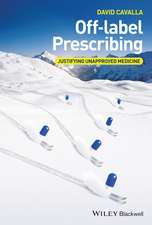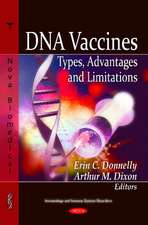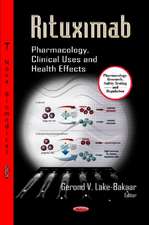Case Studies in Nanotoxicology and Particle Toxicology
Autor Antonietta M Gatti, Stefano Montanarien Limba Engleză Hardback – 26 mai 2015
This comprehensive reference demonstrates the possible risks imposed by managing and handling nanoparticles, showing the effects of involuntary inhalation or ingestion during their use and after their incineration.
Through the use of numerous examples, readers will discover the possible risks and effects of working with nanoparticles, along with best practices to prevent these effects. The text is an essential reference for anyone working in the risk assessment of nanoparticles, including nanosafety professionals, occupational toxicologists, regulatory toxicologists, and clinicians.
- Presents real-life cases showing the potential risks to human health following exposure to nanoparticles
- An ideal reference for anyone working in the risk assessment of nanoparticles, including nanosafety professionals, occupational toxicologists, regulatory toxicologists, and clinicians
- Provides examples to help assess risks of handling engineered nanomaterials
- Advises on the best forms of protection and the safest nanotechnological products
Preț: 541.16 lei
Preț vechi: 569.65 lei
-5% Nou
Puncte Express: 812
Preț estimativ în valută:
103.56€ • 112.45$ • 86.99£
103.56€ • 112.45$ • 86.99£
Carte tipărită la comandă
Livrare economică 15-29 aprilie
Preluare comenzi: 021 569.72.76
Specificații
ISBN-13: 9780128012154
ISBN-10: 0128012153
Pagini: 276
Dimensiuni: 152 x 229 x 18 mm
Greutate: 0.59 kg
Editura: ELSEVIER SCIENCE
ISBN-10: 0128012153
Pagini: 276
Dimensiuni: 152 x 229 x 18 mm
Greutate: 0.59 kg
Editura: ELSEVIER SCIENCE
Public țintă
Toxicologists, risk assessors, graduate students in toxicology, regulators and policy makers, cliniciansCuprins
1. Introduction 2. Origin 3. Nanotoxicology 4. Clinical Cases 5. Sentinel Cases 6. Environmental Cases and Nanoecotoxicology 7. War Cases 8. Food, Drugs, Nanoparticles 9. Occupational Cases 10. Miscellaneous Cases 11. The Future of Nanotechnology 12. Conclusions














